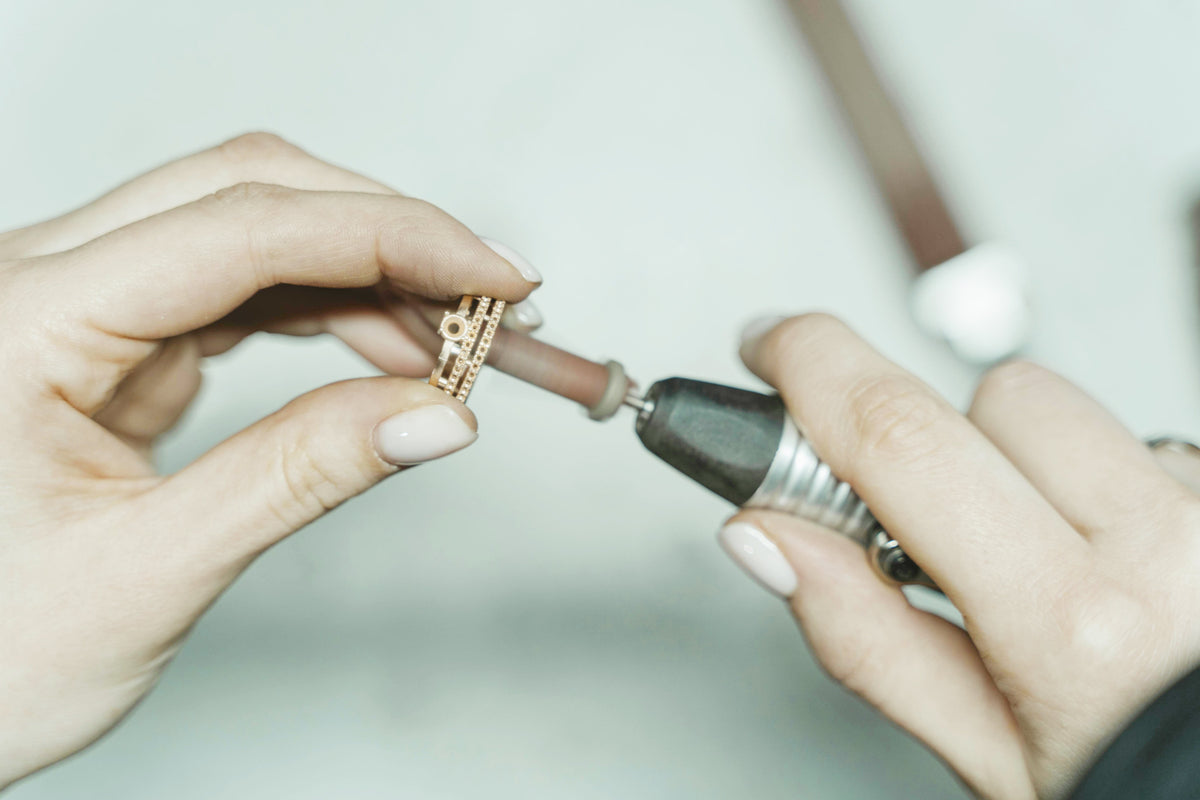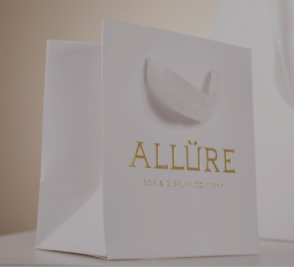
How to build a jewelry repair business
The jewelry repair industry is estimated to be around $1.5 billion in the United States yearly.
That number may look small when compared to the value of the jewelry market in the US, which is approximately $70 billion. But what if I tell you that there is a direct connection between jewelry repairs and jewelry products sold?
A typical jewelry store’s profit will mostly come from product-based sales, with some repair and design services added in.
But there is often an overlooked link between repair services and products sold:
Many jewelry piece sales only come to be as a result of a repairs-based visit.
The takeaway here: Layering-on a jewelry repair service to your jewelry store is a proven way to grow your jewelry retail brand. (And if you also add on design services, then the potential for increasing your bottom line increases even more.)
What’s included in this post?
- Put more potential buyers in front of your pieces.
- Build trust.
- Gain an additional source of revenue.
- Top 5 types of jewelry repairs
- How to set up jewelry repair prices
- How to quote repair prices that clients actually agree to pay
- How to profit from jewelry design services
- How to start doing custom jewelry design
- How to streamline jewelry repairs
While you may have known that jewelry repairs can be profitable, there are many reasons why you didn’t offer this service yet.
→ Helpful Tip: Don’t let these reasons stop you! I’ll get to work-arounds for most of them later in this post.
Common Hesitations for Offering Jewelry Repair Services as part of your Jewelry Business
- More staff. (Especially if you’re not a jeweler yourself.)
- More headaches. (I’ve got a business to run, selling products, not widening shanks!)
- Customers expect too much as a service and are unwilling to pay.
- Customers will choose to fix their old pieces over buying new ones.
The last one was said in jest. The underlying motive for repairing and purchasing are so far removed from each other, that this should not be a concern.
Top benefits for offering jewelry repairs in your store
1. Put more potential buyers in front of your pieces.
One of the biggest gains that a jewelry repair service can bring to your store is undoubtedly more foot traffic. Southern Jewelry News published that jewelry repairs account for 60% of a store’s traffic.
David Geller, an expert in the jewelry industry (who helped with this article), puts that percentage even higher: a whooping 75% of customers visit a store for a service-based visit.
That means many more people laying their eyes on your glittering pieces. They may not have come to buy today, but perhaps they will tomorrow.

2. Build trust
As with anything costly, the need to earn your customer’s trust before they buy is real.
When they bring you a piece for repair, you gain their trust by satisfactorily completing the job. They will automatically absorb the subliminal trust messages you send their way (Especially, if you throw in a free polish too.)
The facts are there to support this from Deloitte research: 88% of customers who highly trust a brand will return to buy again.
Case in point: Never underrate trust.
For this reason, says David Geller, every customer should be treated like they will spend thousands, even if all they’re coming for is a cleaning or repair.
3. Gain an additional source of revenue
The income from repairs alone may seem trivial when compared to closing a sale.
But consider that this channel is a steady stream of income that is not dependent on your jewelry piece inventory.
See where I’m going with this? Typical store repair income can range between 10 to 25% of total sales. That’s nothing to sneeze at!
Top 5 Types of Jewelry Repairs You’ll be dealing with
Knowing what you’re getting yourself into may help you decide if you should add repairs as a service!
Here are the top 5 types of repairs customers seek, in the order of popularity:
- Cleaning rings
- Checking and replacing for loose stones
- Getting their jewelry repaired or rings sized
- Appraisals
- Possibly a custom design
How to set up jewelry repair prices
According to David Geller, the sad fact is that most jewelry stores don’t really know the cost of a jewelry repair, whereas they do know the cost of the ring they put in the showcase.
Doing a repair in-house by an hourly or salaried bench jeweler can be tough to price for many reasons:
- This is the big number one reason: the store believes the customer won’t pay a higher price, and so they’ll quote a price that doesn’t support a good profit margin.
- There isn’t time to figure out the labor costs.
- There are other costs involved, besides the actual labor. They may include:
- Cost of the jewelry parts (example: stones)
- Shop expenses (repair supplies such as drill bits, emery paper, jewelry cleaning solutions, etc.)
- More employees to handle the repair cycle, besides for the jeweler. (Think ordering parts, taking in repairs, etc.)
All these factors may be completely unaccounted for in a typical $50-$150 repair sale!
This has led to many a hair-pulling and may be a reason why many stores prefer to outsource repairs, rather than deal with them in-house. Because when you get an invoice from the repair shop, you can just double or triple the figure to the customer. And there you have it – assured profits!
So should you outsource your repairs? Well, if you know the true cost of repairs, then doing them in-house may just be more profitable.
But how to price them accurately?
One way to do this is to get a list from a trade shop and mark it up (in a way that makes sense, based on other costs involved.)
There is also a better way to quote prices – David Geller’s Blue Book To Jewelry Repairs, which factors everything in for you. Over 5000 stores in the US have access to it, and many attest to quoting their prices with confidence. They have seen great success and profits when using what became known as “The Blue Book”. Check out his book at: gellersbluebook.com

And don’t be scared off by the number one reason mentioned before, the false belief that customers won’t pay a higher price! Read on to see why.
How to quote jewelry repair prices that clients actually agree to pay
David Geller puts it down squarely, “90% of repair customers will pay whatever you charge them!”
“In the USA, the price to resize a ring ranges from $40 to $150, and all stores have a 90% closing ratio,” he explains. This isn’t the case with selling a ring. Even if you give your best sales pitch, 70% will walk out without buying!
Why the difference? That’s just the nature of a repair. Just like when repairing your computer, you’ll pay whatever you get charged. You just need confidence in your quote.
How to profit from jewelry design services
Custom design, another jewelry service, is considered a high end item, allowing you to charge premium rates.
After all, if you want something made to your exact specifications and fancy, you’ve got to be ready to pay for it!
And customers know that. When they’re ready for it, they know it will cost them more than the piece in the display case.
Designing jewelry can also be very profitable, especially because customers tend to shop around less when considering a custom design.
How to start doing custom jewelry design
There are three ways for getting into custom designing:
- Have one of your vendors custom manufacture the design for you and your customer.
- Reach out to vendors who only do custom work and can manufacture the design from a drawn picture or Cad file that you send them.
- Design it in-house by your jeweler, using the age-old wax carving method or Cad/Cam program.
Once you get into it, you’ll be able to better foresee which design path to take for different projects.
Which leads me to the next thing – you need efficiency to ensure all the parts of the train remain on track – from ordering the materials, to communication with various staff, etc.
Tips to streamline the jewelry repairs process
Implement some (or all!) of these practical tips to ensure customer satisfaction and internal organization.
Use repair envelopes
Invest in pre-printed, numbered jewelry repair envelopes specifically designed for handling repairs. These jewelry repair envelopes usually have a receipt section so that the customer can keep a copy of their repair ticket.

Be sure to note all relevant information on the envelope, such as:
- Customer details (name, contact information)
- Item description
- Repair type requested
- Estimated cost and timeframe
- Date of drop-off and pickup
Organize with envelope trays
Use jewelry envelope trays to organize envelopes based on repair stages, such as: Incoming, In-progress, and Ready for pickup.

Communicate effectively
These pointers will help customers be on board with your policies and prices:
- Clearly communicate repair policies, including warranties and pricing right when taking in the repair. Timing is everything when it comes to managing expectations!
- Provide customers with a detailed receipt outlining the agreed-upon repair services and estimated timeline.
- Offer updates via SMS or email for milestones, such as when repairs begin or are completed.
- This can be a very helpful tip! Take photos of the item upon drop-off to avoid disputes.
Give a final lookover
Perform a final inspection step to ensure repairs meet quality standards before contacting the customer.
Conclusion
Don't neglect training staff properly for jewelry repairs and custom design. Many sales staff "pooh pooh" repairs as they think it takes away from “selling a diamond”. Educate them that the average sale in a jewelry store is, in fact, not a diamond at all, but rather a mix of jewelry products and repairs. Remind them that repairs often lead to selling diamonds.
So, train all sales associates to handle repairs much like products, (and treating the customer the same) and see your total sales increase and profits soar.



